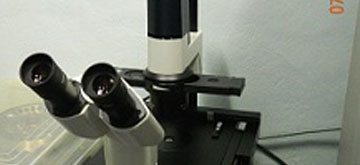High-resolution field emission scanning electron microscope (HR-FESEM) and EDAX

Instrument specification
Thermo Scientfic Verios G4 UC High resolution field emission scanning electron microscope (FESEM) operates at a variety of voltages ranging from 2 – 30 kV. It has Schottky FEG electron gun having an adjustable probe current ranging between 0.8 nA – 100 nA. It has a magnification of over 1,000,000 x providing a high resolution of 0.6 nm. FESEM operates under a vacuum system that is entirely oil-free. Differential pumping on the electron column ensures tip operation at the ultra-high vacuum levels (10-10 mbar).
Technicalities
The Verios G4 UC features through-the-lens (TLD) SE and BSE detection specifically designed for high-resolution
imaging at both high and low kVs, as well as an Everhart-Thornley SE detector for conventional SE detection. The in-lens SE detector features a technique where the energy range of the detected secondary electrons can be selected. The sample stage can be rotated 360 o and tiled to – 60 o making the system very versatile. Scan rate for the system ranges from 50 ms all the way upto 50 s.
Key features
- Resolution: 0.6 nm
- Magnification range between 100 – 1,000,000 x.
- Working distance of 15 cm to least working distance of 3 cm.
- Sample can be tilted (-60 o) and rotated (360 o).
- Operating voltage between 2 – 30 kV.
- Consists of SE and BSE mode and EDAX for elemental analysis. Having both line, spot and mapping capabilities.
Theory of operation
A scanning electron microscope is a type of electron microscope that produces images of sample by scanning the surface of the sample with a focused beam of electrons. These electrons interact with atoms in the sample, producing various signals that contain information about the surface topology and composition of the sample. Electron beam upon impact with the surface emits, secondary electrons, back scattered electrons, characteristic X-rays and light. These captured by various detectors.
To learn more about the working principle of SEM, please visit, https://en.wikipedia.org/wiki/Scanning_electron_microscope
Sample Images/data:

 Search
Search Sign in
Sign in






 Total views : 236899
Total views : 236899